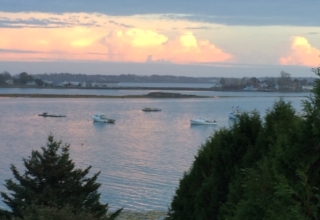
The visionary stories often contain moments of personal doubt and spiritual despair. We see this in the inspiring stories of Joan-of-Arc and Mother Teresa. Visionary stories often contain elements not only of doubt and despair, but also of wisdom and of courage. Visionary leaders convey stories of sacrifice, tribulation and triumph—having parted the Red Sea or dwelled in the desert so that they might enter into a land of milk and honey. Ironically, in many instances they have led their people to a land of milk and honey but have not been able to enter this land themselves (Moses, Lincoln, Gandhi, John and Robert Kennedy, Martin Luther King).
The key to wholehearted acceptance of and sustained support for a visionary leader resides in the identification of a compelling story from the past that bridges to the future, or that encompasses fiscal and social responsibility. It is a sacred story that successfully conveys secular values. While this story often involves something about the visionary leader’s own life and struggles, it must also resonate with and align with the stories and personal aspirations of those hearing or reading this story. The visionary leader’s own expertise must align with the hopes (not just the fears) of those whom this leader wishes to guide into a promising future. There is a phrase which usually reads: “think globally but act locally.” This same sentiment, slightly revised, can apply to visionary stories: “make them personal and local, but be sure that they speak to a much larger constituency.”
The Nature of Visionary Settings: Given that visionary leadership is dependent on the right place and the right time, it is also important that the vision be articulated at the right time and in the right place. While Lincoln’s Gettysburg Address still appeals to us today, it is profound in large part because it was given at a commemoration ceremony for those soldiers who died during the bloody battle at Gettysburg. Lincoln is literally “consecrating” the ground where these young men were buried. Martin Luther King’s “I have a dream” speech was similarly given on a particularly auspicious occasion (a major civil rights march on Washington D.C.) and at a very patriotic location (facing the Lincoln Memorial). The visionary leader must pick the special time and place when offering a visionary statement.
Where and when does the visionary leader find this special place and time? What is the nature of a setting in which a vision of the future can be created that builds off collective expertise, that is collectively embraced and that provides guidance for the articulation and use of shared expertise? These are critical questions. The answer resides partially in the descriptions we have already provided regarding structures than enhance collective expertise. We wish to expand on these descriptions by proposing that there are five primary criteria with regard to the nature of an effective setting for establishing a collective vision of the future. These five criteria tell us something about when and where we should not only offer a vision, but also invite in collective expertise. We will first briefly identify these criteria and then suggest how these criteria help us identify an appropriate time and place for collective expertise and vision.
First, any collective expertise and any statement of vision must be created and sustained by an entire social system—not just its leader(s). Collaboration is critical. As we noted with regard to Open Space technologies, the right people are always there to build the future—it is only a matter (as the Gergens propose) of facilitating a shared exploration of the “truth.” Expertise comes in the collaboration, rather than in the knowledge or skill of any one person. The isolated leader of vision is speaking only to the wind if they have no appetite for constructive engagement with other people. A vision that is not subject to ongoing dialogue and revision is of no value to anyone.
Download Article














